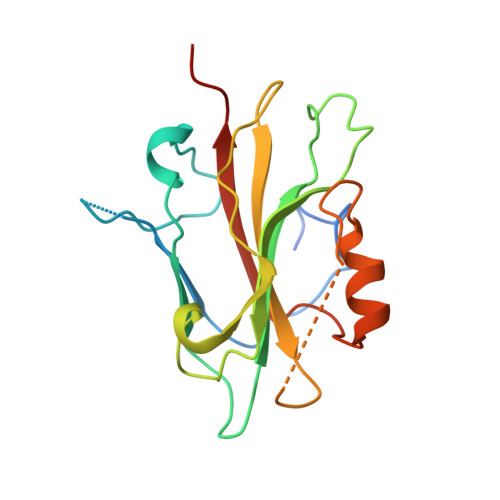The Structure of Antirrhinum Centroradialis Protein (Cen) Suggests a Role as a Kinase Regulator
Banfield, M.J., Brady, R.L.(2000) J Mol Biology 297: 1161
- PubMed: 10764580
- DOI: https://doi.org/10.1006/jmbi.2000.3619
- Primary Citation of Related Structures:
1QOU - PubMed Abstract:
Expression of the plant protein centroradialis (CEN) leads to a morphological switch between shoot growth and the development of flower structures (inflorescence). We have determined the crystal structure of Antirrhinum CEN to 1.9 A resolution. This structure confirms the CEN proteins as a subset of the family of phosphatidylethanolamine-binding proteins (PEBP), as predicted from sequence homology. Mammalian forms of PEBP have been found to act as inhibitors of MAP kinase signalling, a central signalling cascade regulating cell differentiation. CEN and PEBP proteins share a similar topology dominated by a large central beta-sheet. The strong conservation of a binding pocket at one end of this sheet which is capable of binding phosphoryl ligands, suggests the biological effects of CEN, like PEBP, arise from the ability of this region to form complexes with phosphorylated ligands, hence interfering with kinases and their effectors.
- Department of Biochemistry, University of Bristol, Bristol, BS8 1TD, UK. M.Banfield@bris.ac.uk
Organizational Affiliation:
















